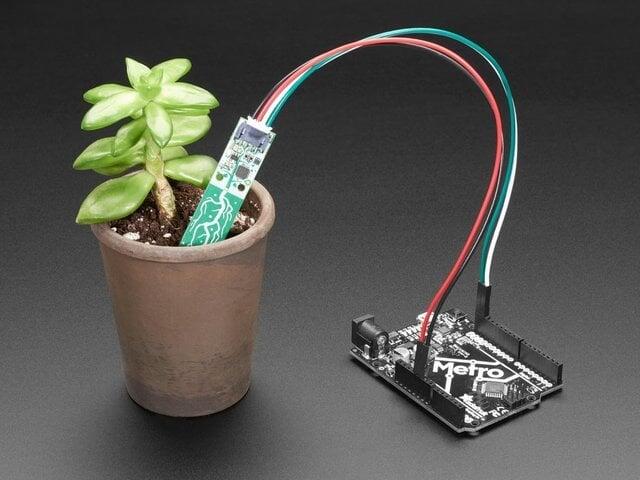Soil Moisture Sensor: Working Principles and Applications
Soil moisture sensors are important tools in farming and environmental science. These devices measure how wet the soil is. They give helpful information about soil health, plant growth, and climate changes.
This article explores how soil moisture sensors work and their practical uses. Next, let’s look at how soil moisture sensors operate.
Understanding the Working Principles of Soil Moisture Sensors
The main purpose of soil moisture sensors is to measure how much water is in the soil. They use different technologies, like capacitance, resistance, and spectral analysis. Capacitive sensors are the most common type used.
Capacitive Soil Moisture Sensors
These sensors depend on the link between the soil‘s dielectric constant and its moisture content. When placed in the soil, the sensor interacts with water molecules.
This interaction changes its capacitance value based on how much water is present. The change in capacitance is turned into a voltage or current signal. This signal can then be recorded and analyzed.
Resistive Soil Moisture Sensors
Resistive sensors measure soil moisture by detecting changes in electrical conductivity. When soil moisture goes up, conductivity also goes up. This results in a lower resistance value that the sensor detects. The sensor then changes this resistance into a useful electrical signal for monitoring and analysis.
Spectral Analysis Soil Moisture Sensors
Soil moisture sensors work by using electromagnetic waves to find out how much water is in the soil. When these waves move through soil with different moisture levels, their speed and strength change. The sensor sends out these waves and measures how they return. It uses these changes to figure out the water content in the soil.
Key Functions and Applications of Soil Moisture Sensors
Soil moisture sensors serve a wide range of purposes across diverse fields. Their main applications include:
1. Farm Irrigation
Management
These sensors give real-time data on soil moisture levels. This helps farmers schedule irrigation better. It saves water and creates the best conditions for crop growth.
2. Plant Growth Research
Soil moisture sensors are important for experiments in the field and the lab. They help us see how plants respond to different moisture levels. This research helps us improve crop breeding and strategies.
3. Soil Contamination Monitoring
Monitoring soil moisture can reveal its chemical makeup. This helps find soil contamination early and check soil health.
4. Climate Change Research
Data from these sensors helps us see how climate change impacts soil moisture. This provides us with key insights into the environment and ecosystems.
5. Agricultural Decision Support Systems
Soil moisture sensors, along with other tools and data, help farmers make better decisions. They can improve irrigation, fertilization, and crop care.
6. Water Management in Arid Regions
In places with little water, sensor data helps manage water use for farming and other important needs.
7. Ecological Restoration and Protection
Monitoring soil moisture helps restore ecosystems such as forests, grasslands, and wetlands. It gives important data to check ecosystem health and guide restoration efforts.
8. Precision Agriculture
With accurate moisture readings, farmers can adjust their management techniques for different areas. This leads to better efficiency and sustainability in farming.
9. Education and Research
These sensors are used in real-world settings. They give students and researchers hands-on chances to study soil science. This helps them improve their practical skills and research abilities.
10. Agricultural Advisory Services
Organizations can use sensor data to give expert advice and technical help to farmers. This can solve problems and boost agricultural productivity.
In conclusion, soil moisture sensors are important tools that link technology with farming and environmental science. They enhance traditional farming methods and help create sustainable ways to manage ecosystems worldwide.
